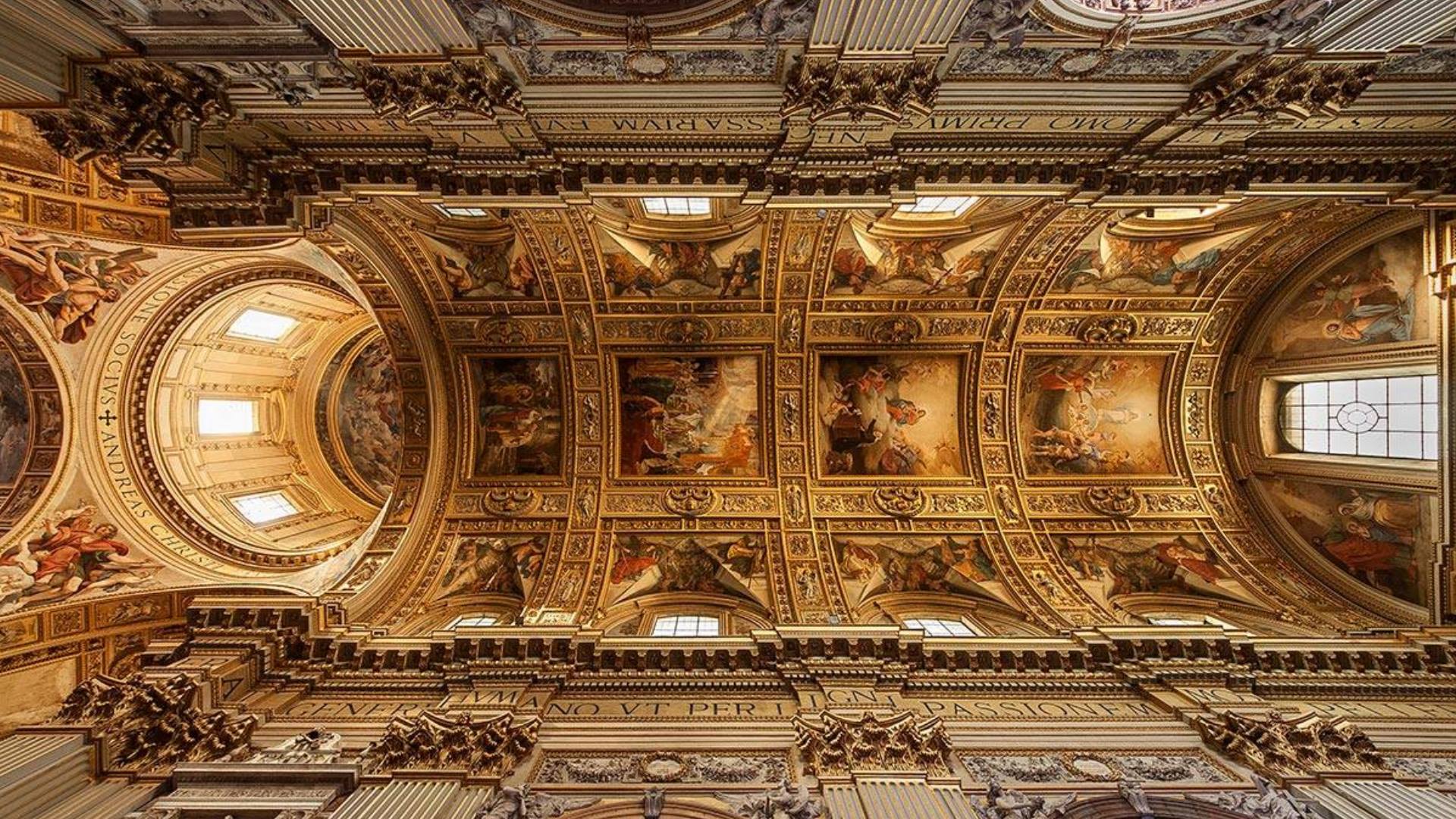
Largely financed by Cardinal Alessandro Peretti di Montalto, nephew of Pope Sixtus V, works for the construction of the monumental Sant’Andrea della Valle started in 1591 under the designs of Gian Francesco Grimaldi and Giacomo Della Porta but continued in the following century. In 1608 Maderno, charged with completing the building, enlarged the transept and raised the dome. The high and sumptuous travertine façade dates back to the second half of the 17th century and was added by Carlo Rainaldi, who resumed Maderno's design, accentuating the plasticity of the construction elements and the chiaroscuro.
The plan is based on a Latin cross. Structurally there is a vast nave flanked by eight high chapels that emphasize the vertical rhythm of the building. One of them, the Barberini chapel, is also known as the “Cappella della Tosca” because part of the plot of Puccini’s opera is set here. Two further side chapels overlook the apse, rich in gold and frescoed by Mattia Preti. At the ends of the nave, there are two rare testimonies of the ancient Vatican basilica, transferred here in 1614: the funeral monuments of popes Pius II and Pius III Piccolomini, the first dating back to about 1470, the second to the early 16th century.
The beautiful dome built by Maderno and inaugurated on 6 November 1622 was the second highest in Rome after St Peter’s. Worth of note are the capitals of the lantern of the dome, with cherubs that form a sort of volute with their wings: they are thought to have been designed by the young Francesco Borromini, called to Rome a few years earlier by his uncle Carlo Maderno to work on the construction site of St Peter’s. The interior of the dome is decorated with the wonderful frescoes made by Giovanni Lanfranco, a baroque masterpiece of illusionism that brings the sky into the church. The work was carried out concurrently, and probably in competition, with the fresco of the pendentives and the apsidal transept painted by Domenichino between 1621 and 1628.
Outside, on the side of the church, there’s the statue of the so-called “Abbot Luigi”, one of the many talking statues in the city.
Seven optical tricks in art: Rome and the magnificent deception in painting and architecture
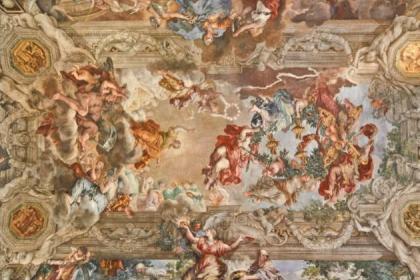
Theatrical effects, optical games and perspective illusions that make art wonderful
A stroll through the places of Tosca
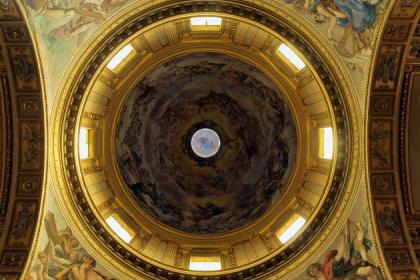
Rome, the ideal setting for cinema masterpieces and great melodies
 Condividi
Condividi
Palazzo della Cancelleria
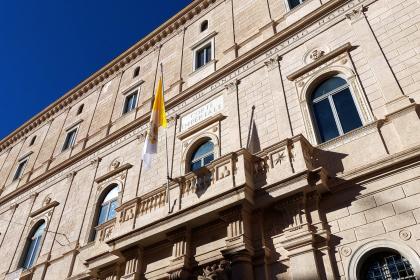
 Condividi
Condividi
Palazzo Braschi
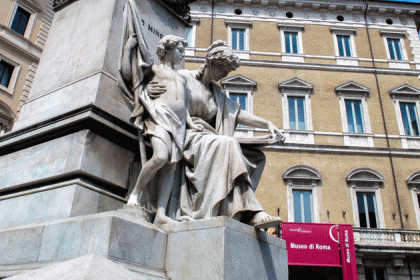
 Condividi
Condividi
Information
For the timetable of the masses and visiting conditions, please consult the contacts.
 Condividi
Condividi
Location
To find out about all accessibility services, visit the Rome accessible section.











































